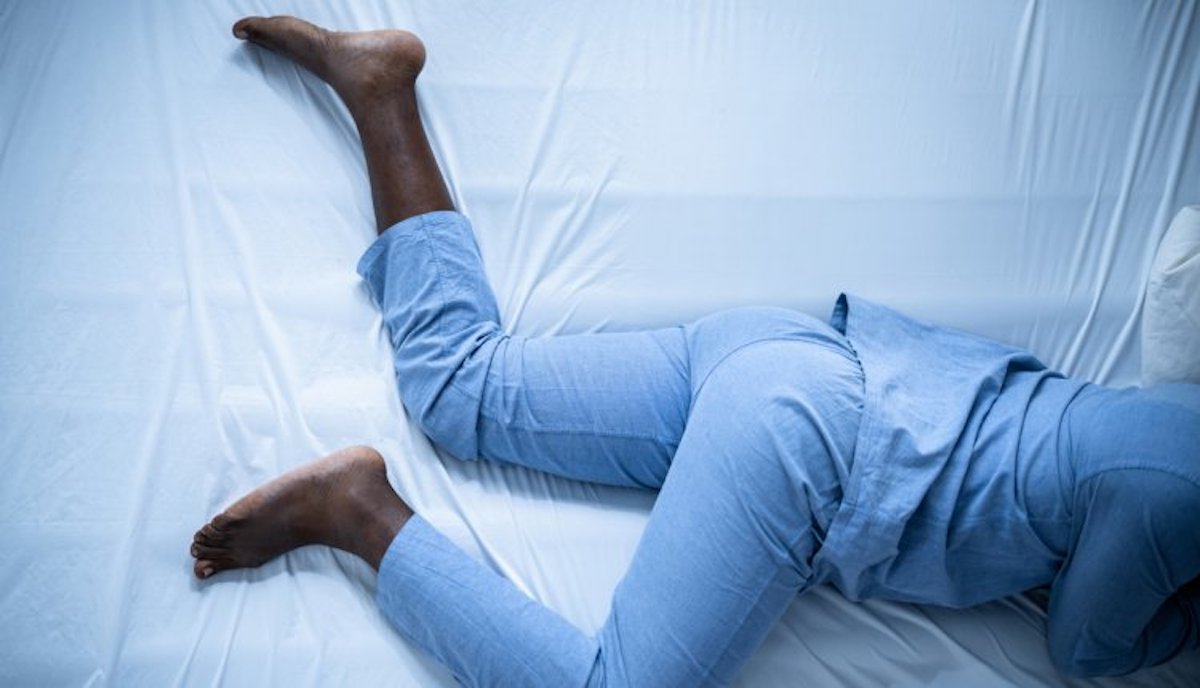Willis-Ekbom disease, better known as restless legs syndrome or RLS, is a (sleep) condition that affects between 7% and 10% of the people in our country. Despite the condition’s name referring to the legs, it can be so bad that symptoms occur throughout the body. RLS isn’t dangerous, but it can affect someone’s life so severely that some patients cannot sleep and/or live their daily lives. This makes it important for everyone to know how to recognize RLS and if there are any ways to get rid of it.

What Is Restless Legs Syndrome?
Restless legs syndrome is a sleep condition where, often, the legs begin to move uncontrollably, caused by an uncomfortable or even painful sensation in one – or both – legs. Despite being called a sleep disorder, RLS happens in the evening, for example when laying in bed or when sitting for a long time. You may find it difficult or impossible to fall asleep because of this “restlessness,” resulting in little to no sleep – hence the sleeping disorder. Often people suffering from RLS find relief in walking around and shaking their extremities.
Causes & Risk Factors of RLS
Often restless legs syndrome is a genetic condition, in other words, it is passed on from parent to child. More than 90% of the people with RLS have a parent, sibling, or child with the same condition. Women have a bigger chance of getting RLS and these symptoms may worsen or occur during (the last trimester) of pregnancy. Developing the syndrome also increases significantly as we get older. In addition, it may also be caused (as a symptom) by any of the following medical conditions:
- Iron deficiency
- Uremia
- Hypothyroidism
- Depression
- Fibromyalgia
- Parkinson’s disease
- Kidney disease
- Diabetes
- Rheumatoid arthritis
- Peripheral neuropathy
- Dialysis
Another factor that can contribute to developing restless legs syndrome is the use of certain medication, think of antidepressants, allergy drugs and anti-nausea medication. Drinking alcohol & caffeine, and/or smoking is also best avoided, as this can also worsen symptoms. Fortunately, RLS doesn’t have dangerous or life-threatening complications. However, living with RLS can be pretty difficult and patients can develop depression and/or insomnia as it can be very hard to fall (and stay) asleep.

Symptoms of Restless Legs Syndrome
The main symptoms of RLS is the urge to move the legs – or in severe cases also the arms and/or the rest of the body. This urge is caused by an uncomfortable feeling – or restlessness. Descriptions of these legs sensations, include:
- Crawling
- Creeping
- Pulling
- Throbbing
- Aching
- Itching
- Electric
- Tugging
- Burning
- Gnawing
As said before this (leg) discomfort often happens at bedtime, but can also happen when the legs have been inactive for a long time. For example when you have to sit for a longer period, like a long bus or plane ride. Other restless legs syndrome symptoms, include:
- Sleep disruption
- Bedtime behavior problems
- Drowsiness during the day
- Behavior and work performance problems
Treatment Options for RLS
Restless legs syndrome can be profound in a person’s life, so the big question is: are there any treatment options for this condition? Well, first you have to contact your professional healthcare provider. Your provider will make the right diagnosis, there is no specific test or exam to see if someone has RLS, which means your healthcare provider can diagnose this by test you for other medical conditions – fitting into the clinical picture – and ruling them out, think of obstructive sleep apnea or other neurological or sleep disorders.
If the diagnosis is indeed restless legs syndrome, your healthcare provider will set up the right treatment plan. Treatment options may include:
- Lifestyle changes, regular exercise & healthy sleep patterns
- Dietary changes
- Using heating pads & cold compresses
- Massages
- Magnesium supplements
- Reduce stress
- Iron supplements
- Prescribed medication, like dopamine agonists & anti-seizure medications
For more information about restless legs syndrome, its symptoms, and treatment options, start your search here:

